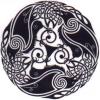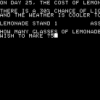Hello.
I’m currently working on a game and I need to develop a set of unit attributes and combat mechanics. I’ll be honest, this is my first foray into this aspect of game design and I’m feeling a bit lost. I wouldn’t mind getting a little advice or direction.
First, let me explain a bit about the unit attributes. My main focus is to have the attributes themselves be as simple as possible while keeping the number of overall attributes to a minimum. Currently, I have 5 unit attributes (not including HP):
Strength (STR) A unit’s base attack / damage value
Defense (DEF) A unit’s base defensive value
Intelligence (INT) A unit’s ability to research equipment
Magic (Mg) A unit’s aptitude for magic (modifies attack and defense)
Tech (Tc) A unit’s aptitude for tech (modifies attack and defense)
I realize that this might make some of the mechanics difficult to develop and that I may need to add or change a few attributes. This is just my ideal for now. A few notes about the attributes though.
- All units have standardised movement. Having a movement attribute is not needed.
- Both units must be at the same location in order to attack one another. Having an attribute for range is not needed
- The game is turn based. Having an attribute for speed is not needed.
- Values for STR, DEF, INT will range from 10-99
- Values for Mg and Tc will range from 0-10
My biggest problem is that I’m not experienced enough yet to know where to start coming up with effective formulas for combat. All of my attempts so far have resulted in awful exponential increases or they only work for that specific unit (not what I’m going for).
Damage
What I’m trying to develop is a formula where STR is used to determine the base amount of damage a unit inflicts when attacking. I’m also trying to incorporate Mg and Tc into the formula as modifiers. If a unit possesses an affinity for Mg, then that unit’s total amount of inflicted damage will be increased – to what extent is determined by the Mg value. In this case, the units inflicted damage is no longer counted as regular damage, but as Mg damage. If the unit instead possessed a value for Tc affinity, the damage would then be counted as Tc damage. If the unit possessed values for both Mg and Tc, the damage would be counted as Mg / Tc.
Defence
Similar to Damage, what I’m trying to develop is a formula where DEF is used to determine the base defense of a unit when being attacked. Again, I’m also trying to incorporate Mg and Tc into the formula as modifiers. If a unit possesses an affinity for Mg, then that unit develops a resistance to Mg damage – to what extent is determined by the Mg value. The same goes for Tc resistance if a unit possesses a Tc affinity.
Critical Hits
Very basic. For now I’ve simply set it as a 20% chance for a critical per hit with 1.5x damage being dealt.
If anyone has any feedback on my proposed attributes or on where / how I can get started on building some of these formulas, I would be most appreciative.
Cheers,
Drahaus






